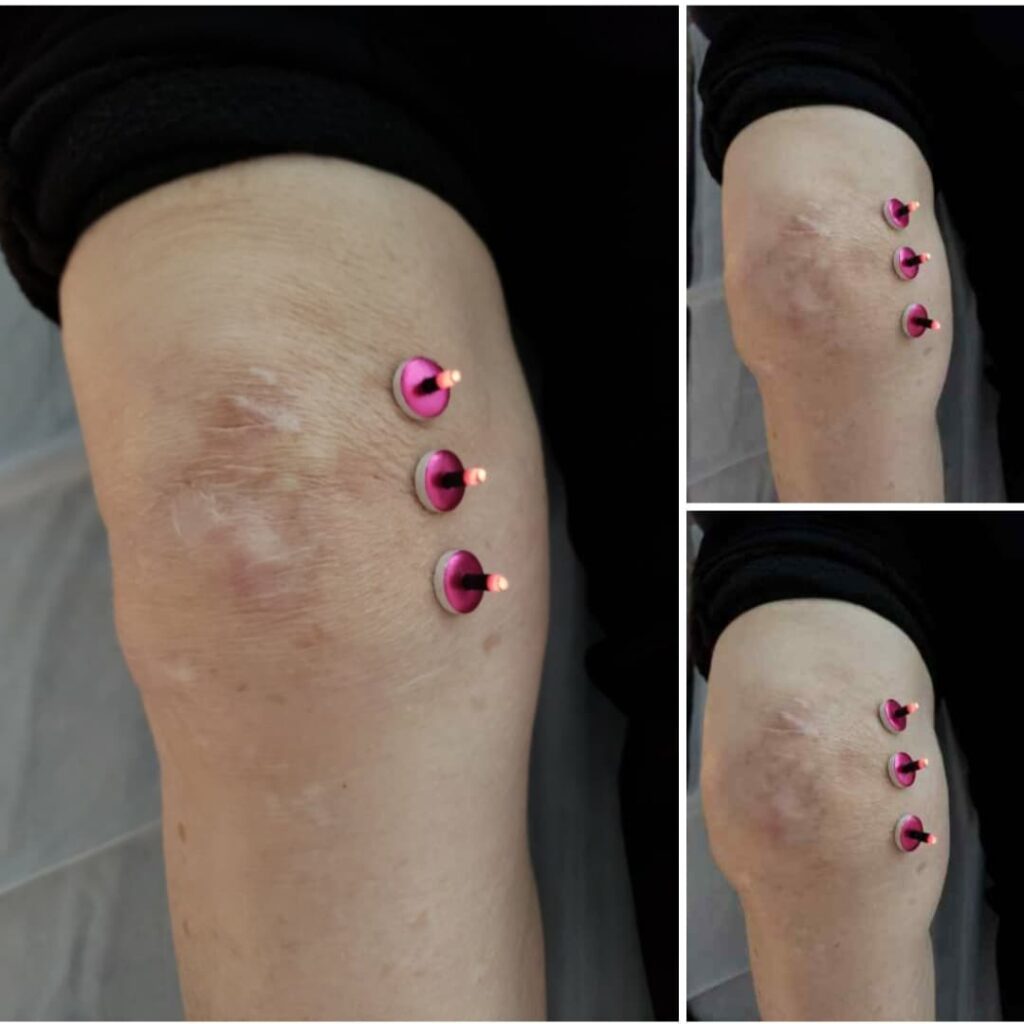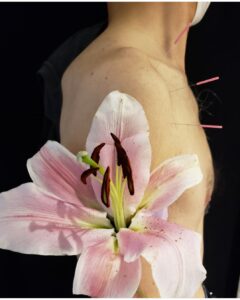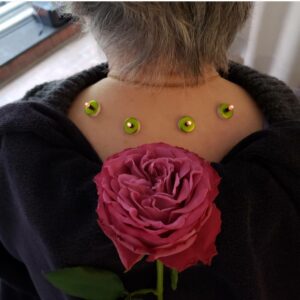膝に水がたまる
Meniscus injury Water in the knee

関節とは、一言で言うと骨と骨のつなぎ目です。身体を自由に動かすには、このつなぎ目がスムーズに動くような仕組みになっています。
例えば、骨の先端部は軟骨というスベスベした組織で覆われていますし、骨と骨の間には軟骨成分でできた半月板というクッション材も存在します。加えて、関節全体は関節包という袋で包まれており、その内側は滑膜という、これもまたスベスベした膜で覆われています。さらにその膜の中は、関節液というヌルヌルと少し粘り気のある液体で満たされています。
このように、膝関節内部は、滑らかな動きを可能にし、衝撃から膝を守るための仕組みが何重にも備わっているのです。
膝の水は「関節液」という液体です。関節液には、関節の動きを滑らかにする潤滑油の役割と、軟骨組織に栄養を届ける役割があります。膝に水が溜まるのは、その量が異常に増えてしまった状です。通常1〜3mL程度なのですが、多い人だと膝が膨んでしまうくらい増えてしまうことがあります。
関節液の量を調節するのは滑膜です。滑膜は、新しい関節液を作って分泌すると同時に、古い関節液を回収する働きを担っています。なんらかの理由でこの新陳代謝のバランスが崩れ、関節液の回収が追いつかなくなった時、膝に水が溜まります。
関節液の新陳代謝がうまくいかなくなるのは、滑膜の炎症に起因することがほとんどです。主な原因としては、変形性膝関節症や半月板損傷、関節リウマチ、痛風などが考えられます。中高年の方の膝に水が溜まる原因疾患として最も多いのは、変形性膝関節症です。
加齢で弱くなった軟骨や半月板などの関節組織がすり減り、そのかけらが滑膜を刺激して炎症を引き起こします。何度、水を抜いても水が溜まるという場合、それは膝の炎症が続いていることになります。
溜まった水を放置すると、水の中に含まれるサイトカインが炎症と痛みをさらに悪化させる恐れがあります。ですから、必要以上に膝の水が溜まりすぎた場合には、なるべく早めに水を抜いてあげて、それと同時に水が溜まる原因を突き止めて、その原因を素早く取り除くことが大切です
膝に水が溜まる事に対しての鍼灸治療ですが、膝の痛みの緩和と可動域の向上が期待できます。基本的な治療法は、運動療法により膝周囲の筋肉を鍛えることで、安定性を高めることです。
しかし痛みにより膝を動けないなどで運動する機会が減ると、可動域が狭まり膝の状態は悪化するという悪循環になりがちです。鍼灸により膝の痛みが緩和されると、日常生活が楽になるだけでなく、可動域が向上し運動療法にも意欲的に取り組むことができます。また膝が安定し、軟骨のすり減りを抑えることが、膝内部の炎症を防ぎ、膝に水が溜まる「関節水腫」の予防にもつながります。
In a nutshell, joints are the connections between bones. In order for the body to move freely, these joints have to be able to move smoothly.
For example, the ends of the bones are covered with a smooth tissue called cartilage, and there is also a cushioning material between the bones called the meniscus, which is made up of cartilage. In addition, the entire joint is encased in a pouch called the joint capsule, the inside of which is covered by a smooth membrane called synovium. In addition, the membrane is filled with a slippery, slightly sticky fluid called joint fluid.
In this way, the inside of the knee joint is equipped with multiple layers of mechanisms to enable smooth movement and to protect the knee from impact.
The water in the knee is a fluid called ‘joint fluid’. Joint fluid acts as a lubricant to smooth the movement of the joint and to deliver nutrients to the cartilage tissue. Water in the knee is a form of abnormal increase in its volume. It is usually around 1-3 mL, but in some people it can increase so much that the knee swells.
The synovium regulates the amount of joint fluid. The synovium is responsible for making and secreting new joint fluid and collecting old joint fluid at the same time. When, for some reason, this metabolism is out of balance and the collection of joint fluid cannot keep up, water accumulates in the knee.
The failure of joint fluid metabolism is most often caused by inflammation of the synovial membrane. The main causes are osteoarthritis of the knee, meniscus damage, rheumatoid arthritis and gout. Osteoarthritis of the knee is the most common disease causing water in the knee in middle-aged and older people.
As the joint tissues such as cartilage and meniscus weaken with age, they wear away and the fragments irritate the synovial membrane, causing inflammation. If water accumulates no matter how many times you drain the knee, this is an indication of ongoing inflammation of the knee.
If the water build-up is left untreated, the cytokines in the water can make the inflammation and pain even worse. So, if you have more water in your knee than you need, it is important to drain it as soon as possible and, at the same time, identify the cause of the water build-up and remove it quickly!
Acupuncture treatment for water in the knee is expected to relieve knee pain and improve range of motion. The basic treatment is to improve stability by strengthening the muscles around the knee through exercise therapy.
However, if the opportunity to exercise is reduced due to the knee being immobile due to pain, the range of movement tends to narrow and the knee condition worsens, creating a vicious circle. When knee pain is relieved by acupuncture, not only does daily life become easier, but the range of movement is improved and the patient is more willing to engage in exercise therapy. It also stabilises the knee and reduces cartilage wear and tear, which prevents inflammation inside the knee and leads to the prevention of ‘oedema arthropathica’, which is a build-up of water in the knee.


